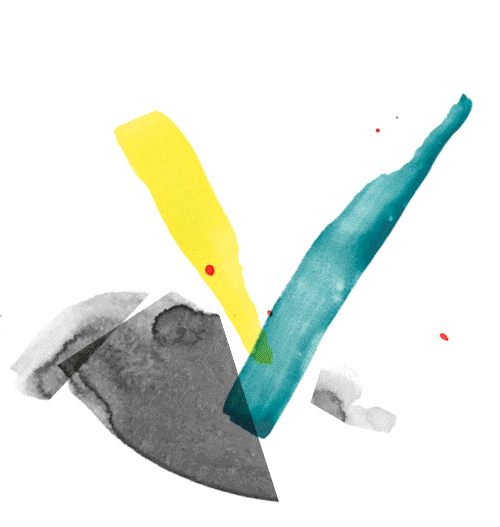

Sign up for our newsletters. You can change the settings or unsubscribe at any time.
Thank you for your subscription. We have sent you an e-mail with a confirmation link.


exp. 1
exp. 2
exp. 3

Pacita Abad
Venue: Gropius Bau
Pacita Abad
Born 1946 in Basco Batanes, PH – died 2004 in Singapore, SG
Although trapunto is an Italian quilting technique that predates the fourteenth century, contemporary artist Pacita Abad inverted this method of creating padded patterns on stitched cloth—lending it a sculptural dimension and infusing it with imagery rooted in non-hegemonic cultures. Using a sewing technique historically gendered “female,” she created a large-scale, hand-sewn, and vibrantly painted series of masks (1981–2000), which incorporate multiple materials and influences ranging from African masks to Nepalese and Tibetan thangkas, depictions of buddhas or deities painted on cloth.
As a Filipina and self-defined woman of color, Abad intensively researched the diverse epistemologies of the Global South throughout her career. Leaving the Philippines after being involved in protests against the dictatorship of Ferdinand Marcos (1965–86), she moved to the United States. As an art student in New York, she became aware of the considerable influence that so-called “primitive” art had exerted on western modernism and of the art world’s bias against the Indigenous artists who produced these works that were often labeled as “decorative” or “ethnographic.” Through her own work and extensive travels and study in Latin America, North America, Asia, and Africa, she became a joyful and persistent advocate for the geopolitical empowerment and artistic recognition of traditional cultures.
The selection of trapunto mask paintings on view includes the largest of the series: Marcos and His Cronies (1985–95), also known as Medicine Man, which took ten years to complete. It represents the brutality and corruption of her country’s government under the Marcos regime. The dictator appears surrounded by eighteen grotesque masks that represent various members of his cabinet as well as his wife Imelda, whose bright earrings refer to her notoriously lavish lifestyle.
Agustín Pérez Rubio
Fragments of the Artist’s Diary, Berlin 11.2019–1.2020
Virginia de Medeiros
Diary
O Bailado do Deus Morto
Flávio de Carvalho
Play
Touching Feeling. Affect, Pedagogy, Performativity
Eve Kosofsky Sedgwick
Monograph
#fight4rojava
Graffiti
COVID-19 VIDEOS
Carlos Motta
Video
Hatred Among Us
Lisette Lagnado
Essay
By using this website you agree to the use of cookies in accordance with our data privacy policy.

Pacita Abad
Venue: Gropius Bau
Pacita Abad
Born 1946 in Basco Batanes, PH – died 2004 in Singapore, SG
Although trapunto is an Italian quilting technique that predates the fourteenth century, contemporary artist Pacita Abad inverted this method of creating padded patterns on stitched cloth—lending it a sculptural dimension and infusing it with imagery rooted in non-hegemonic cultures. Using a sewing technique historically gendered “female,” she created a large-scale, hand-sewn, and vibrantly painted series of masks (1981–2000), which incorporate multiple materials and influences ranging from African masks to Nepalese and Tibetan thangkas, depictions of buddhas or deities painted on cloth.
As a Filipina and self-defined woman of color, Abad intensively researched the diverse epistemologies of the Global South throughout her career. Leaving the Philippines after being involved in protests against the dictatorship of Ferdinand Marcos (1965–86), she moved to the United States. As an art student in New York, she became aware of the considerable influence that so-called “primitive” art had exerted on western modernism and of the art world’s bias against the Indigenous artists who produced these works that were often labeled as “decorative” or “ethnographic.” Through her own work and extensive travels and study in Latin America, North America, Asia, and Africa, she became a joyful and persistent advocate for the geopolitical empowerment and artistic recognition of traditional cultures.
The selection of trapunto mask paintings on view includes the largest of the series: Marcos and His Cronies (1985–95), also known as Medicine Man, which took ten years to complete. It represents the brutality and corruption of her country’s government under the Marcos regime. The dictator appears surrounded by eighteen grotesque masks that represent various members of his cabinet as well as his wife Imelda, whose bright earrings refer to her notoriously lavish lifestyle.
Agustín Pérez Rubio
O Bailado do Deus Morto
Flávio de Carvalho
Play
Being in Crisis together – Einander in Krisen begegnen
Feminist Health Care Research Group (Inga Zimprich/Julia Bonn)
Online workshop
Expresiones de la locura: el arte de los enfermos mentales
Hans Prinzhorn
Monograph
III: La familia son quiénes se alegran con nuestros actos diarios. Detrás de las curadoras de la XI
María Berríos, Agustín Pérez Rubio
Conversation
Fragments of the Artist’s Diary, Berlin 11.2019–1.2020
Virginia de Medeiros
Diary
Freiheit für Chile!
Anonymous
Photo album
By using this website you agree to the use of cookies in accordance with our data privacy policy.

Pacita Abad
Venue: Gropius Bau
Pacita Abad
Born 1946 in Basco Batanes, PH – died 2004 in Singapore, SG
Although trapunto is an Italian quilting technique that predates the fourteenth century, contemporary artist Pacita Abad inverted this method of creating padded patterns on stitched cloth—lending it a sculptural dimension and infusing it with imagery rooted in non-hegemonic cultures. Using a sewing technique historically gendered “female,” she created a large-scale, hand-sewn, and vibrantly painted series of masks (1981–2000), which incorporate multiple materials and influences ranging from African masks to Nepalese and Tibetan thangkas, depictions of buddhas or deities painted on cloth.
As a Filipina and self-defined woman of color, Abad intensively researched the diverse epistemologies of the Global South throughout her career. Leaving the Philippines after being involved in protests against the dictatorship of Ferdinand Marcos (1965–86), she moved to the United States. As an art student in New York, she became aware of the considerable influence that so-called “primitive” art had exerted on western modernism and of the art world’s bias against the Indigenous artists who produced these works that were often labeled as “decorative” or “ethnographic.” Through her own work and extensive travels and study in Latin America, North America, Asia, and Africa, she became a joyful and persistent advocate for the geopolitical empowerment and artistic recognition of traditional cultures.
The selection of trapunto mask paintings on view includes the largest of the series: Marcos and His Cronies (1985–95), also known as Medicine Man, which took ten years to complete. It represents the brutality and corruption of her country’s government under the Marcos regime. The dictator appears surrounded by eighteen grotesque masks that represent various members of his cabinet as well as his wife Imelda, whose bright earrings refer to her notoriously lavish lifestyle.
Agustín Pérez Rubio
Weaving Solidarity
Renata Cervetto and Duygu Örs
Q&A
Invitation to the Species: Cecilia Vicuña
Tamaas / Cecilia Vicuña
Podcast
Teatro da Vertigem
Monograph
Grupo Experimental de Cine en acción
Gabriel Peluffo
Drawing
St Sara Kali George
Delaine Le Bas
Soundscape
Solidarity and Storytelling. Rumors against Enclosure
María Berríos
Essay
By using this website you agree to the use of cookies in accordance with our data privacy policy.

Pacita Abad
Venue: Gropius Bau
Pacita Abad
Born 1946 in Basco Batanes, PH – died 2004 in Singapore, SG
Although trapunto is an Italian quilting technique that predates the fourteenth century, contemporary artist Pacita Abad inverted this method of creating padded patterns on stitched cloth—lending it a sculptural dimension and infusing it with imagery rooted in non-hegemonic cultures. Using a sewing technique historically gendered “female,” she created a large-scale, hand-sewn, and vibrantly painted series of masks (1981–2000), which incorporate multiple materials and influences ranging from African masks to Nepalese and Tibetan thangkas, depictions of buddhas or deities painted on cloth.
As a Filipina and self-defined woman of color, Abad intensively researched the diverse epistemologies of the Global South throughout her career. Leaving the Philippines after being involved in protests against the dictatorship of Ferdinand Marcos (1965–86), she moved to the United States. As an art student in New York, she became aware of the considerable influence that so-called “primitive” art had exerted on western modernism and of the art world’s bias against the Indigenous artists who produced these works that were often labeled as “decorative” or “ethnographic.” Through her own work and extensive travels and study in Latin America, North America, Asia, and Africa, she became a joyful and persistent advocate for the geopolitical empowerment and artistic recognition of traditional cultures.
The selection of trapunto mask paintings on view includes the largest of the series: Marcos and His Cronies (1985–95), also known as Medicine Man, which took ten years to complete. It represents the brutality and corruption of her country’s government under the Marcos regime. The dictator appears surrounded by eighteen grotesque masks that represent various members of his cabinet as well as his wife Imelda, whose bright earrings refer to her notoriously lavish lifestyle.
Agustín Pérez Rubio
IV: How Fear Can Dismantle a Body. Vis-a-Vis with two of four curators of the 11th Berlin Biennale
María Berríos, Lisette Lagnado
Conversation
Memorial to the Sinti and Roma Victims of National Socialism
Dani Karavan
Memorial
El primer nueva corónica y buen gobierno
Felipe Guamán Poma de Ayala
Chronicle
A Moment of True Decolonization / Episode #6: Sinthujan Varatharajah. Constructing the Tamil Eelam State
The Funambulist / Sinthujan Varatharajah
Podcast
Maternidades subversivas
María Llopis
Monograph
Feminist Health Care Research Group
Web archive
By using this website you agree to the use of cookies in accordance with our data privacy policy.
By using this website you agree to the use of cookies in accordance with our data privacy policy.




